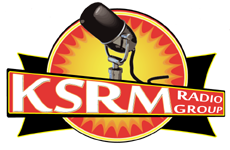On Monday, the Department of Health and Social Services announced 481 new people identified with COVID-19 in Alaska. 478 were residents in: Anchorage (157), Wasilla (110), Palmer (32), Bethel Census Area (31), Eagle River (26), Bethel (18), Kenai (16), Fairbanks (15), Utqiaġvik (13), Chugiak (9), Soldotna (9), Kodiak (7), Sitka (7), Juneau (6), Kusilvak Census Area (3), Willow (3), Houston (2), Mat-Su Borough (2), Nikiski (2) and one each in Big Lake, Dillingham, Douglas, Homer, Kenai Peninsula Borough North, Nome, Prince of Wales/Hyder Census Area, Skagway, Sterling and Valdez-Cordova Census Area.
Three new nonresident cases were identified yesterday:
- Prudhoe Bay: one in North Slope oil industry and one with purpose under investigation
- Location under investigation: one with purpose under investigation
Twenty-nine resident cases and one nonresident case were added to the dashboard through data verification procedures. This brings the total number of Alaska resident cases to 31,323 and the total number of nonresident cases to 1,253.
ALERT LEVELS – The current statewide alert level, based on the average daily case rate over 14 days per 100,000, is high at 79.45 cases per 100,000. All regions in Alaska except for one are in high alert status with widespread community transmission occurring.
High (>10 cases/100,000)
- YK-Delta Region: 187.86 cases per 100,000
- Anchorage Municipality: 100.44 cases per 100,000
- Kenai Peninsula Borough: 100.35 cases per 100,000
- Matanuska-Susitna Region: 78.45 cases per 100,000
- Other Interior Region: 58.49 cases per 100,000
- Northwest Region: 52.6 cases per 100,000
- Fairbanks North Star Borough: 42.68 cases per 100,000
- Southwest Region: 42.27 cases per 100,000
- Other Southeast Region – Northern: 26.19 cases per 100,000
- Juneau City and Borough: 22.11 cases per 100,000
Intermediate (5-10 cases/100,000)
- Other Southeast Region – Southern: 7.88 cases per 100,000
CASES: SEX & AGES – Of the 478 Alaska residents, 236 are male and 237 are female and five are unknown. 29 are under the age of 10; 56 are aged 10-19; 82 are aged 20-29; 88 are aged 30-39; 70 are aged 40-49; 65 are aged 50-59; 56 are aged 60-69; 28 are aged 70-79 and four are aged 80 or older.
CASES: HOSPITALIZATIONS & DEATHS – There have been a total of 710 hospitalizations and 120 deaths, with three new hospitalizations and no new deaths reported yesterday.
There are currently 149 patients diagnosed with COVID-19 who are hospitalized and 13 additional patients who are considered persons under investigation (PUI) for a total of 162 current COVID-related hospitalizations. Twenty-seven of these patients are on ventilators. The percentage of patients currently hospitalized with COVID-19 is 15.1%.
TESTING – A total of 1,011,396 tests have been conducted, with 27,540 tests conducted in the previous seven days. The average percentage of daily positive tests for the previous seven days is 6.39%.
Notes: Cases reported to the Section of Epidemiology are increasing. Reports are received electronically, by phone and by fax. Cases are verified, redundancies are eliminated and then cases are entered into the data system that feeds into Alaska’s Coronavirus Response Hub. Because of the number of reports being received, it may take a day or two after receipt to get a report entered and counted. Extra personnel continue to focus on the effort to process and count reports and minimize the delay from receipt to posting on the Hub. Daily case counts seem likely to remain at this level or higher for the near future.
This report reflects data from 12 a.m. until 11:59 p.m. on Nov. 29 that posted at noon today on the Alaska Coronavirus Response Hub. There is a lag between cases being reported on the DHSS data dashboard and what local communities report. Each case is an individual person even if they are tested multiple times. Total tests are a not a count of unique individuals tested and includes both positive and negative results. The current number of hospitalized patients represents more real-time data compared to the cumulative total hospitalizations. Total number of hospital beds available fluctuate daily as the number of available hospital staff changes. All data reported in real-time, on a daily basis, should be considered preliminary and subject to change. To view more data visit: data.coronavirus.alaska.gov.






